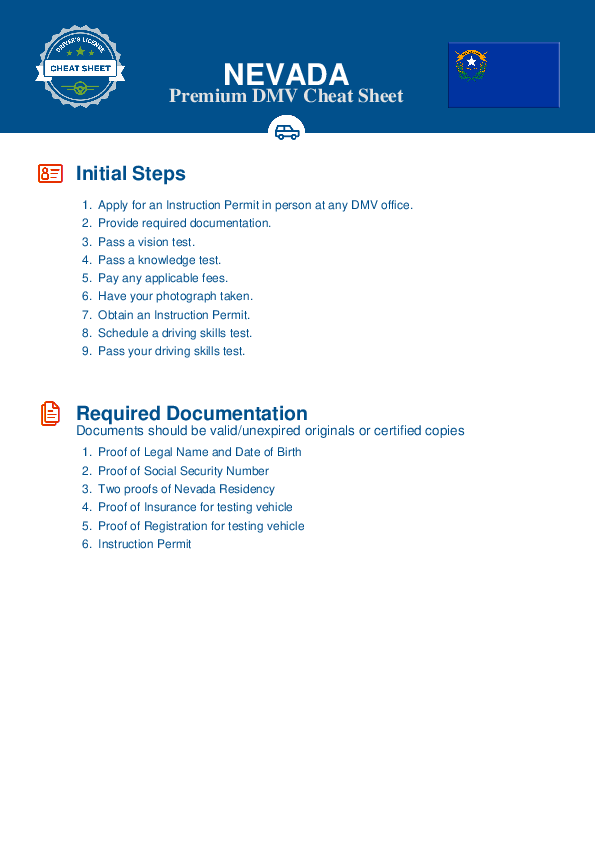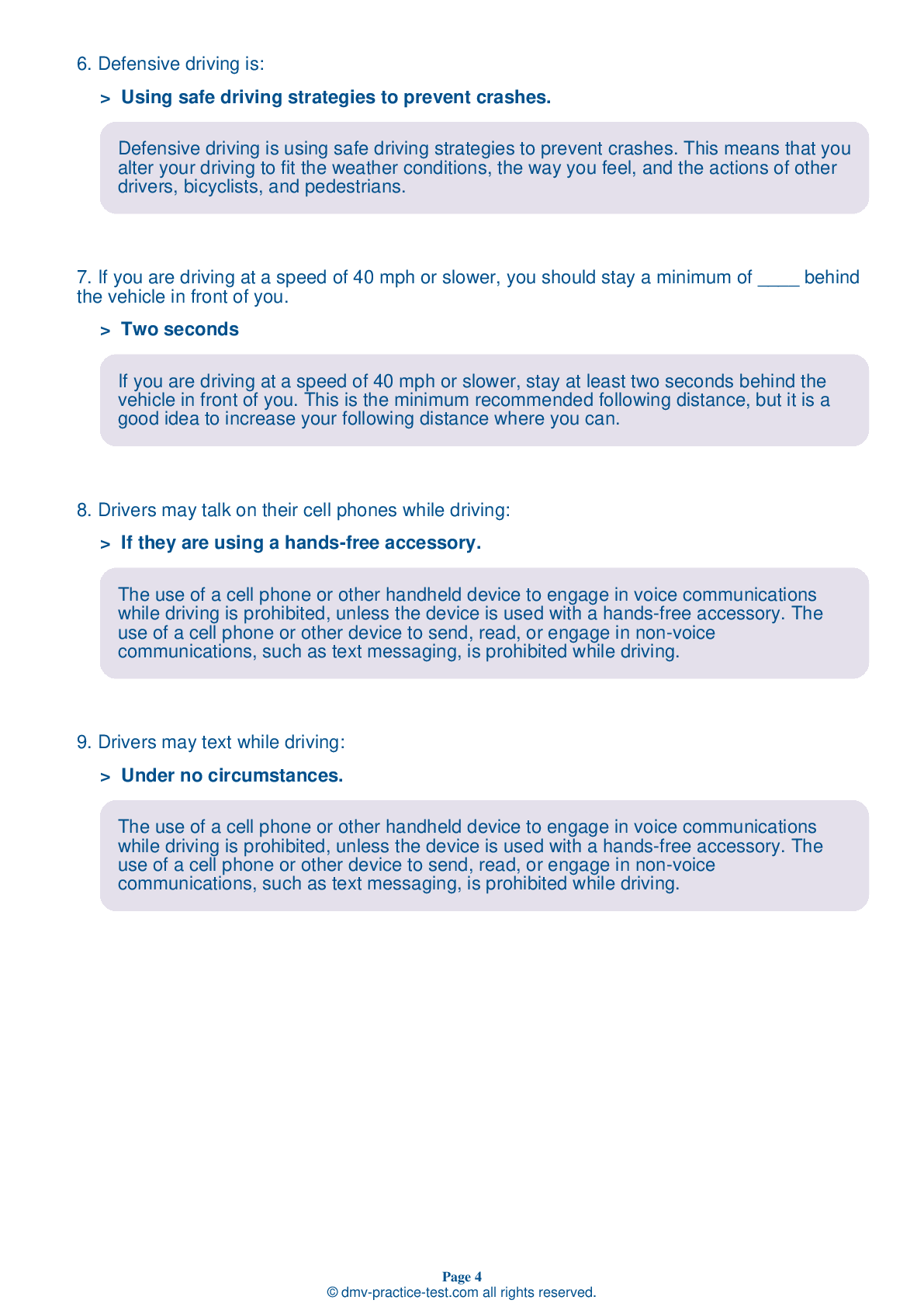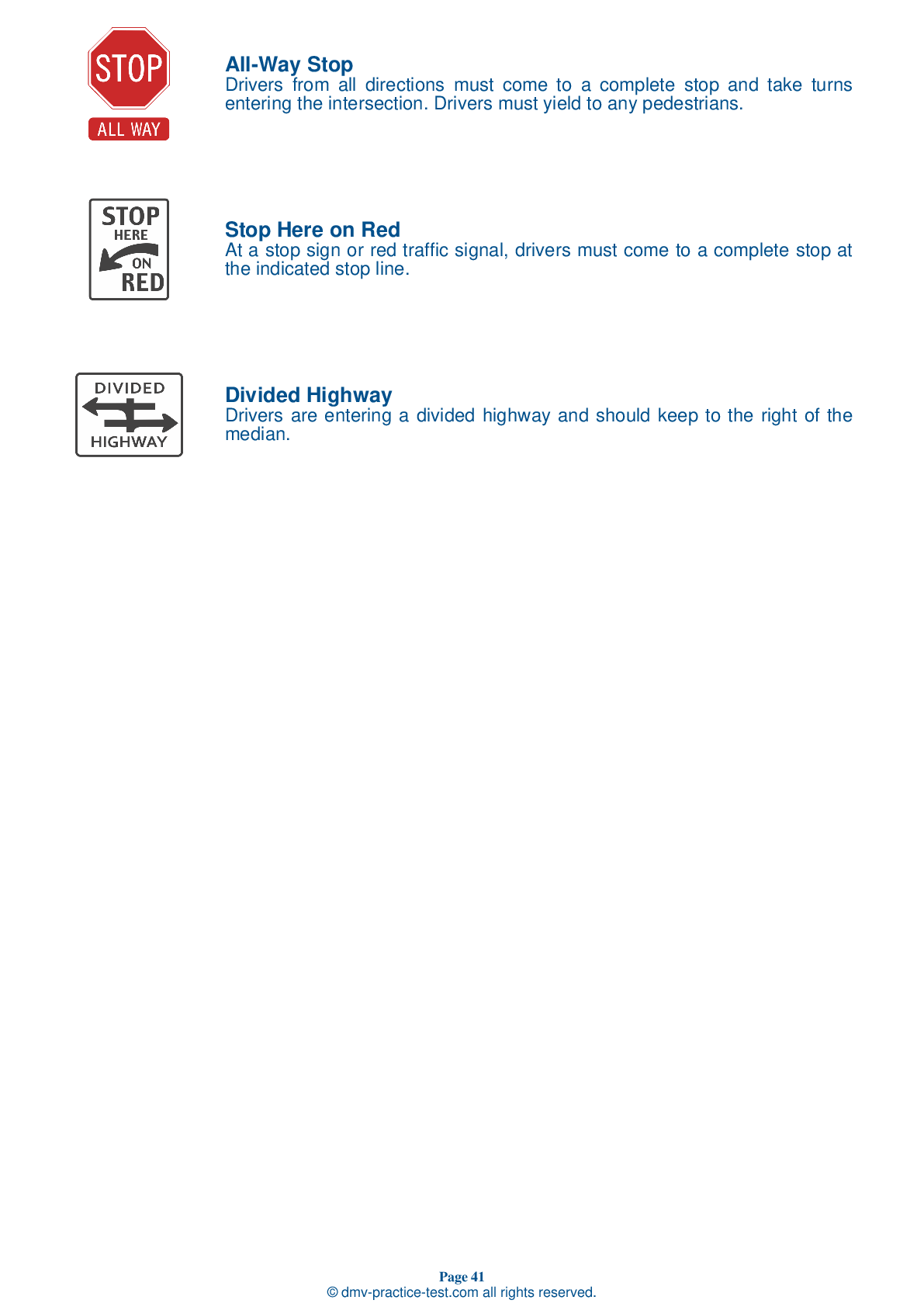FREE Nevada DMV Practice Test #19
The Nevada DMV practise examinations have been updated for January 2025. It includes questions based on the Nevada Driver Handbook's most significant traffic signals and legislation for 2025. Use actual questions that are very similar (often identical!) to the DMV driving permit test and driver's licence exam to study for the DMV driving permit test and driver's licence exam.
On the practise exam, each question gets a tip and explanation to help you remember the concepts. The written component of the official Nevada DMV test will include questions about traffic rules, traffic signs, and driving statutes, as well as knowledge from the Driver Handbook.
To obtain a passing grade, you must correctly answer 40 of the 50 questions. To help you prepare for your instruction permit or driver's licence, take our Nevada DMV practise test.
The DMV exam is available in several languages.
Using any kind of testing assistance will result in an automatic fail, and the DMV may take additional action against your driver's licence, so stay away from it.
1 . Braking distance is affected by:
Factors that can affect braking distance include how fast your vehicle is traveling, the condition of your brakes and tires, and the condition of the pavement.
2 . Drivers may text while driving:
The use of a cell phone or other handheld device to engage in voice communications while driving is prohibited, unless the device is used with a hands-free accessory. The use of a cell phone or other device to send, read, or engage in non-voice communications, such as text messaging, is prohibited while driving.
3 . The most common mistake that drivers make when backing is failing to look both ways behind them.
The most common mistake that drivers make when backing up is failing to look both ways behind them. Mirrors do not give you a full view. To see as much as possible, turn your body and head to the right and look through the rear window.
4 . You must yield for emergency vehicles:
You must yield the right-of-way to any emergency vehicle that is using its siren or flashing lights.
5 . This sign means:
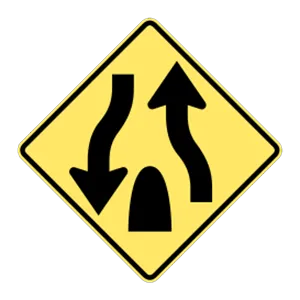
This sign warns drivers that the divided highway ends ahead.
6 . This sign means:

Regulation signs regulate traffic speed and movement, displaying rules which drivers must obey. This regulation sign indicates that drivers turning left at a green light must yield to oncoming traffic and may complete the turn when it is safe to do so.
7 . This road sign means:
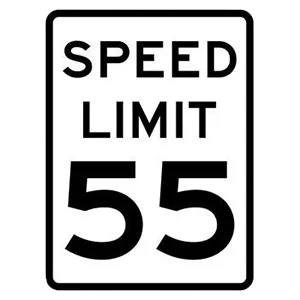
This is a speed limit sign. It indicates the maximum legal speed that you may drive on the road where it is posted. At times of rain, snow, ice, or other less-than-ideal conditions, you may have to drive more slowly than the posted limit.
Need Car Insurance? No problem!
Compare the best rates in Nevada and find a personalized policy that meets your needs.
1. Are You Currently insured ?
2. Married ?
3. Do you own your Home?
4. Do you have more than 1 car ?
5. Have you or a Family Member Honorably Served in U.S. Military ?
6. Your Name
7. Age
8. Zip code
IMPORTANT REMINDER:Auto Insurance is Mandatory to drive in Nevada. Get covered before you hit the road to avoid any fines.
Ranked by best match
